Lumax foglamps & spotlamps.
Probably the best-known British supplier of fog- and spot-lamps in the 1960s was Lucas, however they didn't have the market entirely sewn-up, in the UK at least. Wipac for example, better known for their range of windscreen wiper blades, also put their name to a number of aftermarket car lamps in the 1950s and 1960s, as did Lumax, the focus for this particular page. The Lumax Auto Accessories catalogue featured below applies to the 1966 and 1967 seasons, although no doubt the lamps featured within it could be found in garage and accessory shops before this date, and well into the 1970s. If anyone is wondering whether a particular foglamp or spotlamp they've found is suitable for their mid-1960s vehicle, then read on. And even if you're not, hopefully this page will prove to be of interest.
|
|
The stylised cover for this catalogue is quite curious in several respects, not least because none of the cars shown is fitted with any of the car accessories, lamps in particular, described within its pages. In the foreground are two Vauxhall Victor 101 saloons, although whether they were actually parked together I'm not entirely confident about, I suspect a spot of artistic license is at play. Also in view is a two-tone BMC Farina, a Rover P4, a 105E Ford Anglia, a Mk2 Consul, and a number of other, less distinct, cars.
|
|
On the rear cover are advertisements for Lumax bulbs, toggle switches, and sealed-beam headlight units.
|
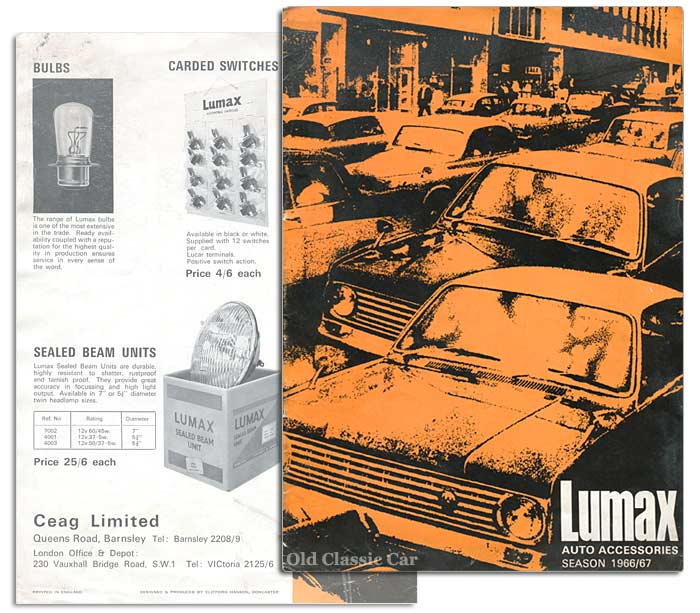
|
|
While a number of other motoring accessories are included in this publication, for example radio aerials and rear view mirrors, the bulk of the content is given over to Lumax lamps of varying descriptions, and it's these that are featured here.
|
Slimline Quartz Iodine fog and driving lamps.
The first full page is given over to descriptions of the slimline Lumax fog and driving lamps, models 2001 and 2000 respectively, which utilise polished stainless steel (as opposed to chrome-plated) shells. Purchasers could select clear lenses, or amber lenses, for either model, and 6 volt or 12 volt electrical systems could be catered for. Prices were the same for all, five guineas and five shillings. Being just 2.25" deep, they were ideal for mounting on the top of slim bumpers close to a car's grille, as was the trend in the 1960s. All four variants are shown below, but not to relative scale.
|
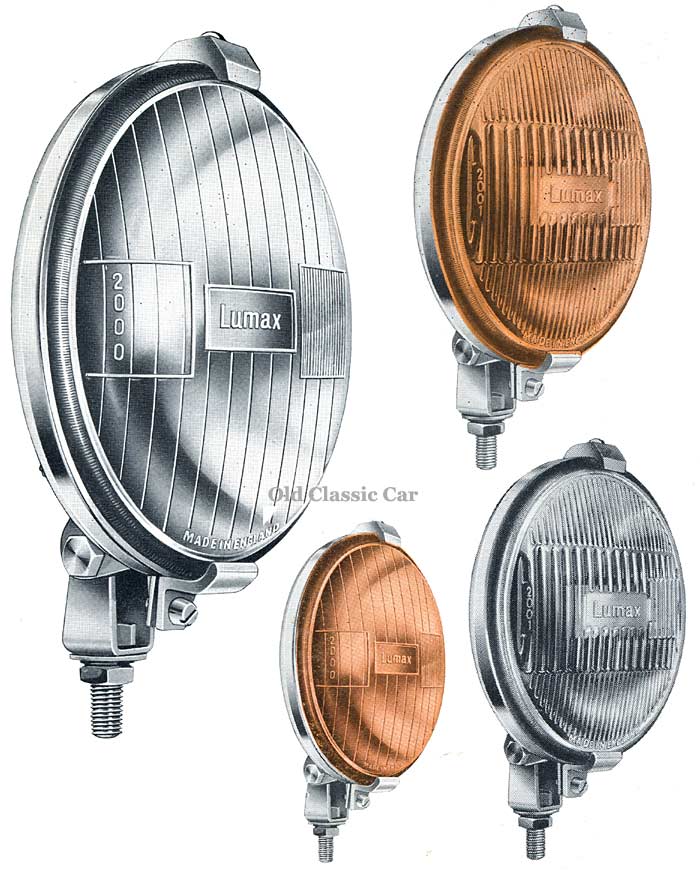
|
Lumax Slimline Standard.
Priced at 65 shillings each were the Standard Slimline lamps, housed in stainless shells just like those shown above, but with standard lenses. Again, both fog (DF1) and driving (D1) versions were offered. Their overall diameter was also the same, at 5.75".
|
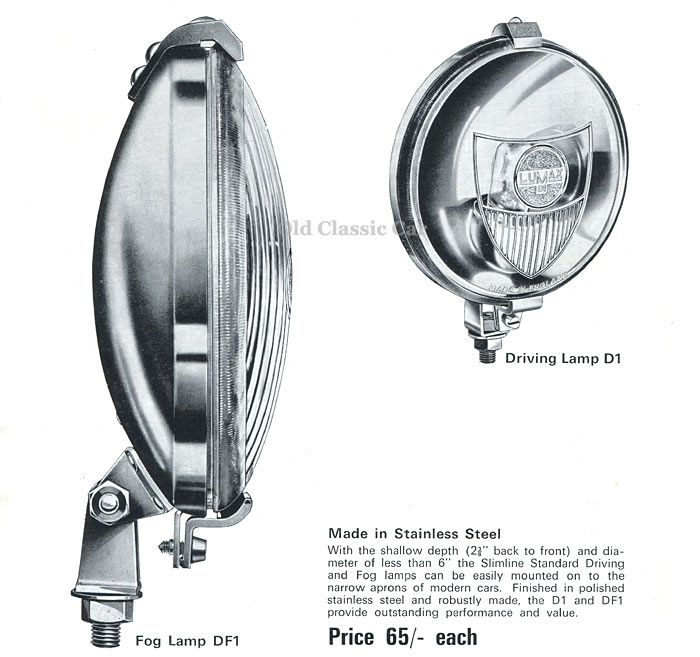
|
Twin lamps (chrome plated).
If a motorist preferred to buy a pair of chrome-over-nickel plated lamps, as opposed to stainless steel, then Lumax was only too happy to oblige, as the next illustration demonstrates. Here we have the "Twin Lamps", which look to be of an earlier design to the Slimline type, and were priced at 65 shillings a piece also.
|
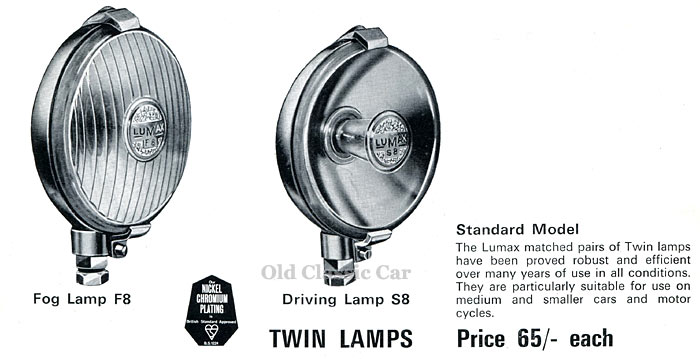
|
Rear-mounted driving and fog lamps.
Rally-car drivers often took advantage of having rear-mounted lamps fitted to their cars' bootlids, and several expensive cars of the 1950s and 1960s also saw rear-mounted lamps discretely installed, semi-flush, within their front panel, rather than being attached to the bumper or a badge bar. Just as Lucas did, Lumax made available a couple of lamps to suit such requirements, resulting in the S8B Driving Lamp, and the F8B Fog Lamp, shown below.
|
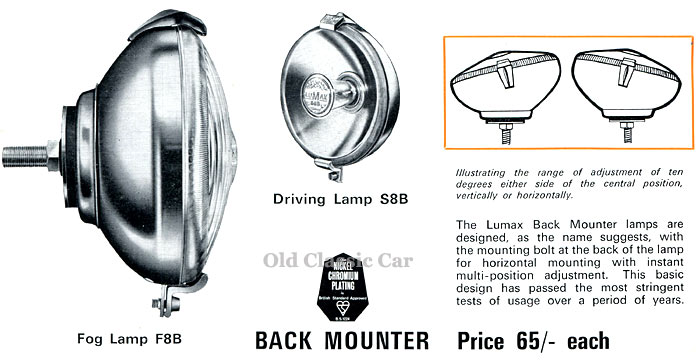
|
Reversing light.
Factory-installed reversing lights were just a dream for most budget-conscious new-car buyers in Britain during the 1960s, so to satisfy this omission in the specification of so many popular small cars of the day, Lumax offered the following - the Model 202 reverse lamp. Available from October 1966 onwards, for 33 shillings a car owner could equip his or her car with this useful accessory. If you were lucky, there'd be a way of incorporating a switch within a car's gear selector somehow, otherwise you were left with a manual switch to control the lamp. Consultant designer Mr Brian Asquith A.R.C.A. is credited with this lamp's design. Mr Asquith was a well-known industrial designer and sculptor of the day.
|
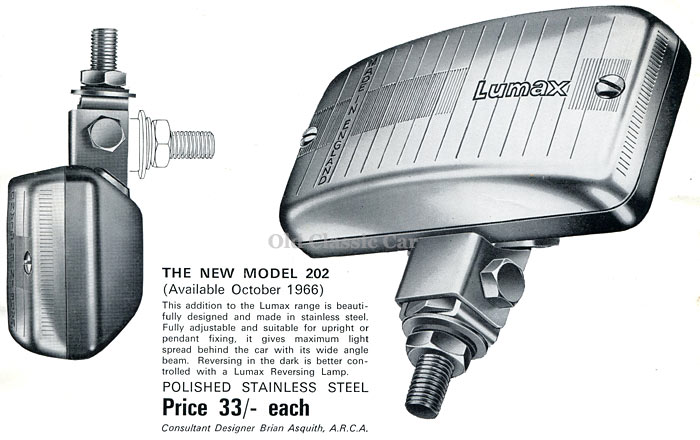
|
Rear foglamp.
Near-identical in design to the Model 202 reversing lamp is this, the Anti-Fog Warning Lamp, although now fitted with a red lens.
|
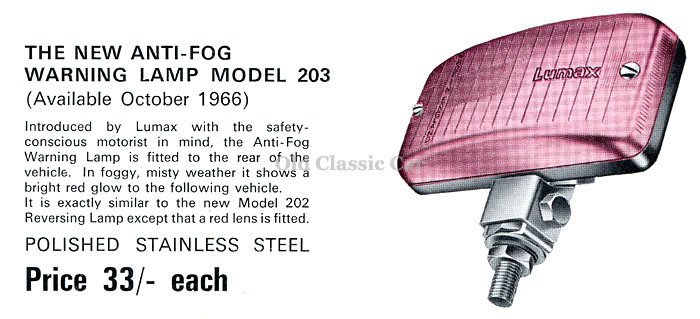
|
Lamps for commercial vehicles.
The CF9 (fog lamp) and CD9 (driving lamp) were aimed at owners and operators of larger, commercial vehicles. Sturdily-built, with a stove-enamelled steel shell and chromed bezel, it could be installed upright above a bumper, or hanging beneath it, its reliable sealing allowing for either type of fitting.
|
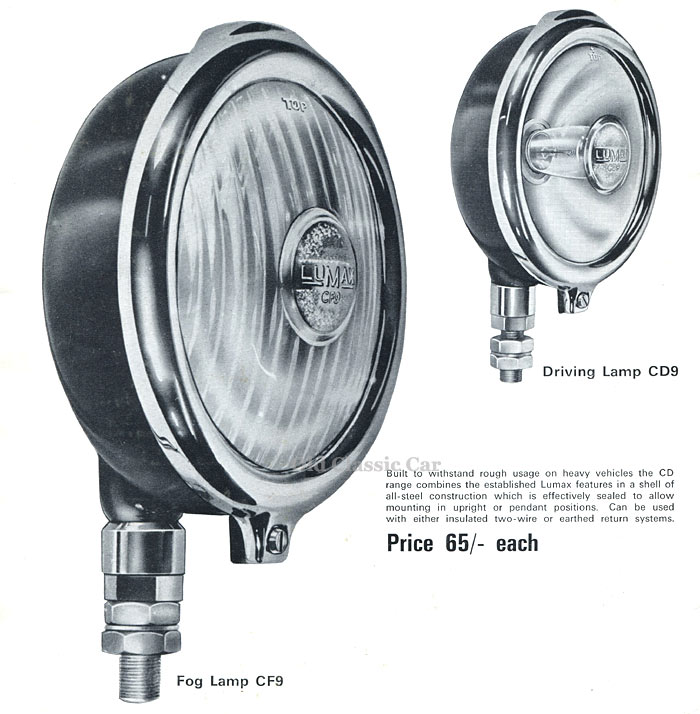
|
|
I've a badge-bar with a pair of these lamps fitted to it, it's seen action on the front of several old cars I've owned, for example on the Standard 10 Companion I owned between 2009 and 2011, below, and a Standard 10 with Standrive transmission several years before that ...
|
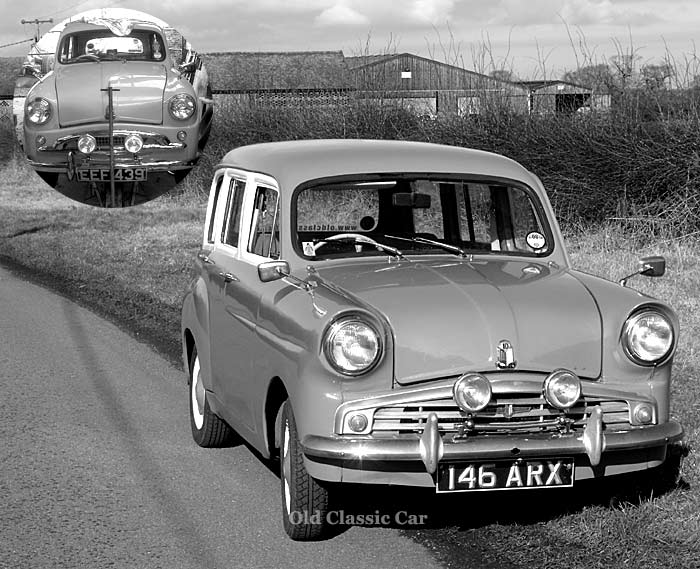
|
|
More items of paperwork relating to motoring in the pre- and post-war years, can be found in the Motoring Collectables section here at Old Classic Car.
|













